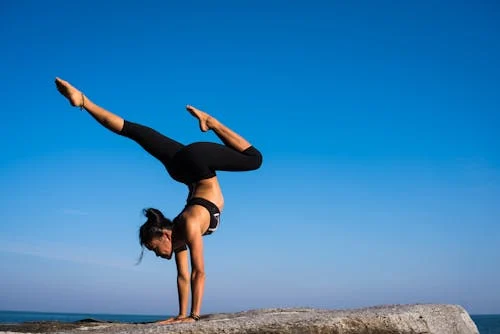In a world where stress and lifestyle-related ailments are rampant, ancient practices like yoga offer a holistic approach to health and well-being. Among the various forms of yoga, Iyengar Yoga stands out for its therapeutic benefits and precise alignment techniques. Let’s delve into the origins, principles, and therapeutic powers of Iyengar Yoga.
Origins of Iyengar Yoga:
Iyengar Yoga is named after its founder, B.K.S. Iyengar, who developed the practice in the 20th century. Drawing inspiration from classical yoga texts, Iyengar refined traditional yoga asanas (poses) and introduced props such as blocks, straps, and bolsters to assist practitioners in achieving correct alignment and posture.
Principles of Iyengar Yoga:
1. Alignment: Central to Iyengar Yoga is the emphasis on proper alignment of the body in each pose. Through precise instructions and use of props, practitioners learn to align their bodies correctly, reducing the risk of injury and maximizing the benefits of each pose.
2. Breath Awareness: Breath awareness is integral to Iyengar Yoga, with a focus on deep, rhythmic breathing to calm the mind and enhance the flow of energy throughout the body. Conscious breathing facilitates relaxation and concentration, fostering a meditative state.
3. Sequencing: Iyengar Yoga classes are typically sequenced to gradually build strength, flexibility, and endurance. Poses are systematically arranged to ensure a balanced practice that targets different muscle groups and promotes overall well-being.
4. Adaptability: One of the hallmarks of Iyengar Yoga is its adaptability to individual needs and abilities. Props are used to modify poses according to practitioners’ limitations or injuries, making the practice accessible to people of all ages and fitness levels.
Therapeutic Powers of Iyengar Yoga:
1. Pain Management: Iyengar Yoga is renowned for its therapeutic benefits in managing chronic pain conditions such as back pain, arthritis, and migraines. By promoting proper alignment and gentle stretching, it helps alleviate muscular tension and improve mobility.
2. Stress Reduction: The mindful approach of Iyengar Yoga cultivates mental calmness and clarity, making it an effective tool for stress reduction and anxiety management. Practitioners learn to observe their thoughts without judgment and cultivate a sense of inner peace.
3. Rehabilitation: Iyengar Yoga is widely used as a rehabilitation tool for individuals recovering from injuries or surgery. Its gentle yet effective approach helps rebuild strength, flexibility, and confidence while promoting healing and recovery.
Conclusion:
Iyengar Yoga offers a holistic approach to health and well-being, combining physical, mental, and spiritual elements to promote overall wellness. Through its emphasis on alignment, breath awareness, and adaptability, it empowers practitioners to harness the therapeutic powers of yoga and lead healthier, more balanced lives. Whether you’re seeking relief from pain, stress, or simply looking to enhance your fitness level, Iyengar Yoga offers something for everyone, making it a valuable practice for modern-day living.
Source – The Times of India



